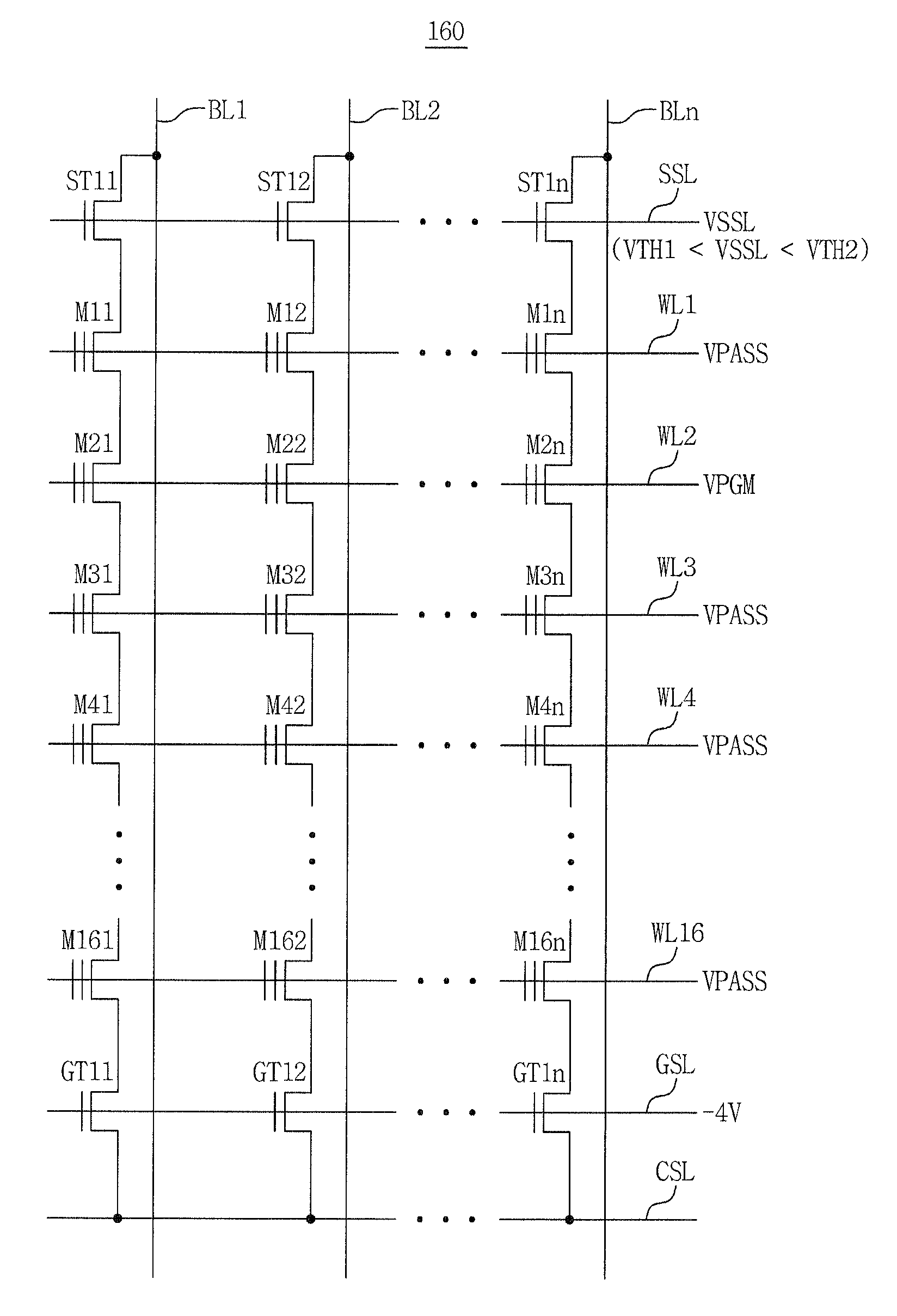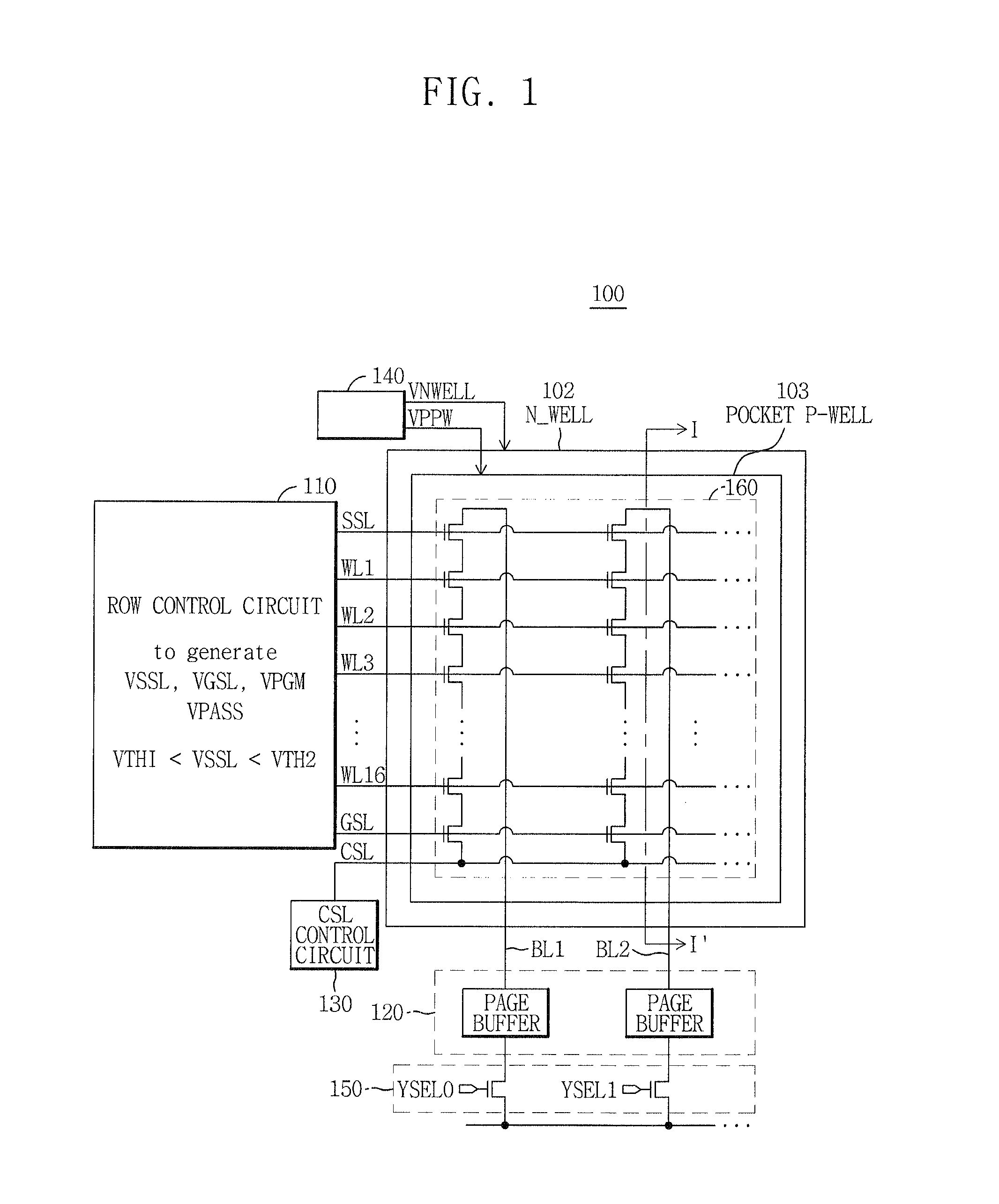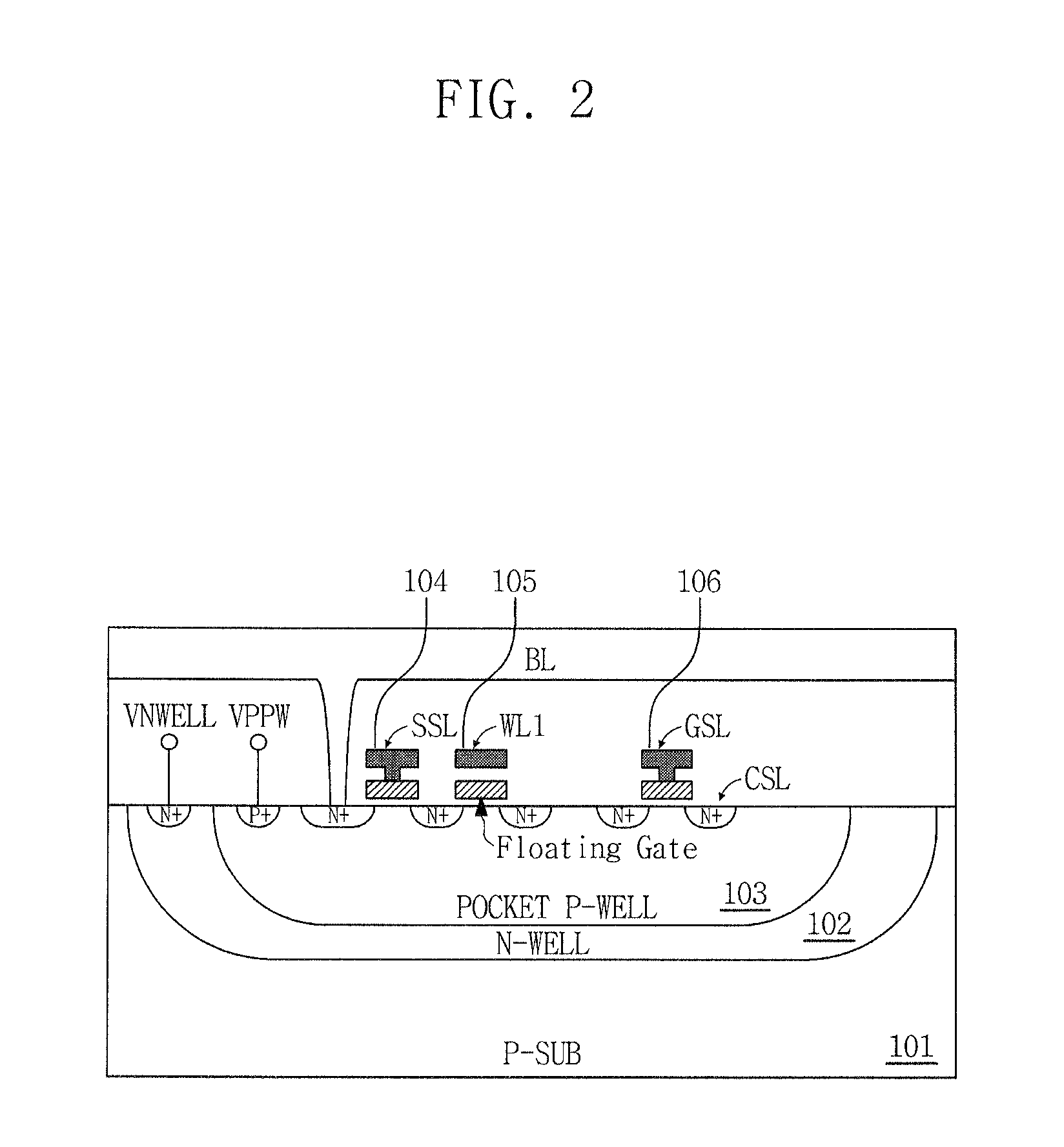Method of programming nonvolatile semiconductor memory device
a nonvolatile, memory device technology, applied in static storage, digital storage, instruments, etc., can solve problems such as loss of stored data, and achieve the effect of reducing programming interferen
- Summary
- Abstract
- Description
- Claims
- Application Information
AI Technical Summary
Benefits of technology
Problems solved by technology
Method used
Image
Examples
Embodiment Construction
[0043]FIG. 1 is a block diagram of a NAND-type flash memory device according to an exemplary embodiment of the inventive concept.
[0044]Referring to FIG. 1, a NAND-type flash memory device 100 includes a row control circuit 110, a page buffer circuit 120, a common source line control circuit 130, a well bias circuit 140, a column gate circuit 150, and a memory cell array 160.
[0045]The memory cell array 160 may be formed in a pocket p-well region (POCKET P-WELL 103), which may be formed in a deeper well (N-WELL 102) formed in a bulk substrate. When the deep well has n-type conductivity, the pocket p-well may be formed to have p-type conductivity. Alternatively, the memory cell array 160 may be directly formed in the bulk substrate without the pocket / well structure.
[0046]The row control circuit 110 may generate a program voltage VPGM, a pass voltage VPASS, and a first voltage VSSL. The first voltage VSSL (a string selection line voltage) may have a voltage level higher than the thresho...
PUM
 Login to View More
Login to View More Abstract
Description
Claims
Application Information
 Login to View More
Login to View More - R&D
- Intellectual Property
- Life Sciences
- Materials
- Tech Scout
- Unparalleled Data Quality
- Higher Quality Content
- 60% Fewer Hallucinations
Browse by: Latest US Patents, China's latest patents, Technical Efficacy Thesaurus, Application Domain, Technology Topic, Popular Technical Reports.
© 2025 PatSnap. All rights reserved.Legal|Privacy policy|Modern Slavery Act Transparency Statement|Sitemap|About US| Contact US: help@patsnap.com



